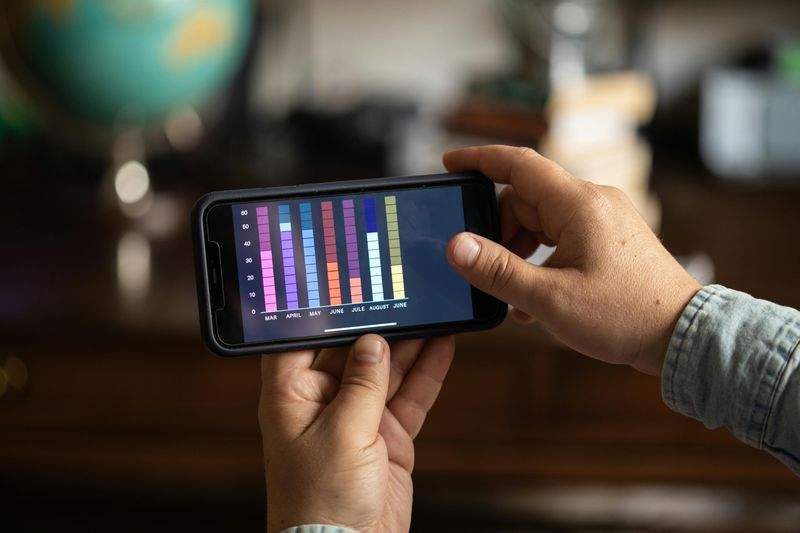How to Create Achievable Money Goals That Work for You

Setting money goals can be exciting but also overwhelming if you don’t know where to start. Many people give up because their financial targets feel too big or too vague. The good news is that creating achievable money goals isn’t complicated – it just takes some planning and honesty about your situation. Let’s look at seven ways to set money goals you’ll actually reach.
1. Start With Your Current Financial Picture

Trying to set goals without knowing where you stand is like planning a trip without knowing your starting point. Gather your bank statements, credit card bills, and pay stubs. Write down all your debts, savings, and regular expenses. This honest snapshot might feel uncomfortable at first, but it’s powerful. When you see the real numbers, you can make realistic plans instead of wishful thinking. Many successful savers say this step alone was eye-opening. Your financial picture isn’t just about problems—it highlights strengths too. Maybe you’re better at saving than you thought, or perhaps you’ve already made progress paying down debt.
2. Make Your Goals Specific and Measurable

Vague goals like “save more money” almost never work because there’s no finish line. Instead, pick exact numbers and deadlines: “Save $1,200 for a vacation by December” or “Pay off $5,000 of credit card debt in 10 months.” The magic happens when you break big goals into smaller chunks. That $1,200 vacation fund becomes $100 monthly or about $25 weekly. Suddenly, your big dream has a clear path with small, doable steps. Research shows we’re more likely to follow through when goals have clear numbers attached. Our brains respond better to “save $25 this week” than “try to save something.”
3. Connect Your Goals to Personal Values

Money goals stick when they connect to what truly matters to you. Ask yourself why you want financial freedom. Is it to travel more? Provide security for your family? Start your own business? A study from Northwestern Mutual found that people who tied their financial goals to personal values were nearly twice as likely to make progress. When saving feels meaningful, it’s easier to say no to random spending. Think about how you’ll feel when you reach your goal. Imagine the stress melting away as debt disappears, or the excitement of booking that trip with cash you’ve saved. These emotional rewards keep you motivated when the going gets tough.
4. Build a Timeline With Milestones

Long-term money goals can feel like forever projects without celebration points along the way. Creating a timeline with smaller wins keeps your motivation high. For example, if you’re saving $6,000 for an emergency fund, celebrate every $1,000 you bank. These milestones work like mile markers on a long road trip. They show you’re making real progress and give you natural moments to pause and feel proud of your work. The timeline should be challenging but realistic. Pushing too hard leads to burnout, while goals that are too easy won’t create meaningful change. Many financial coaches recommend reviewing your timeline quarterly to make adjustments as life happens.
5. Automate Your Money Moves

Willpower runs out—it’s just how our brains work. Smart money-handlers don’t rely on perfect discipline; they set up systems that work automatically. Schedule transfers to your savings account on payday before you can spend that money elsewhere. Apps like Digit or Qapital can analyze your spending patterns and tuck away small amounts you won’t miss. Many people find they save hundreds more per year through automation than through manual efforts. The beauty of automation is that it removes decision fatigue. Once you’ve made a good choice once (setting up the transfer), that good choice keeps happening without requiring your daily attention. This frees up mental energy for other important areas of life.
6. Find Your Money Accountability System

Going solo on financial goals makes it easier to quit when motivation dips. Finding accountability—whether through a friend, partner, app, or financial coach—dramatically increases your chances of success. Some people thrive with public accountability, sharing progress on social media or in money-saving groups. Others prefer private tracking through apps like YNAB or Mint that send gentle reminders when spending drifts off course. The accountability sweet spot differs for everyone. Some need weekly check-ins, while others do fine with monthly reviews. Experiment until you find what keeps you consistent without feeling micromanaged. The right system feels supportive rather than punishing.
7. Plan for Money Hiccups and Setbacks

Even the best money plans hit bumps in the road. The car breaks down, the roof leaks, or hours get cut at work. Building flexibility into your goals means you won’t give up when life happens. Create a “setback strategy” before you need it. This might include a small emergency fund specifically for your goal journey, or rules about what constitutes a true pause in your plan versus a complete restart. Many successful savers follow the 48-hour rule when unexpected expenses arise: wait two days before deciding how to handle the situation. This cooling-off period prevents panic decisions and helps you find creative solutions that protect your progress.

Comments
Loading…